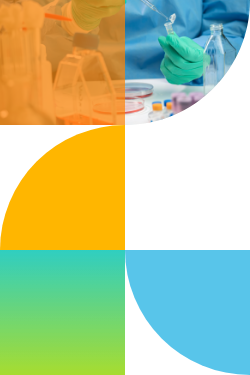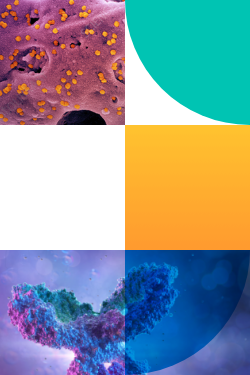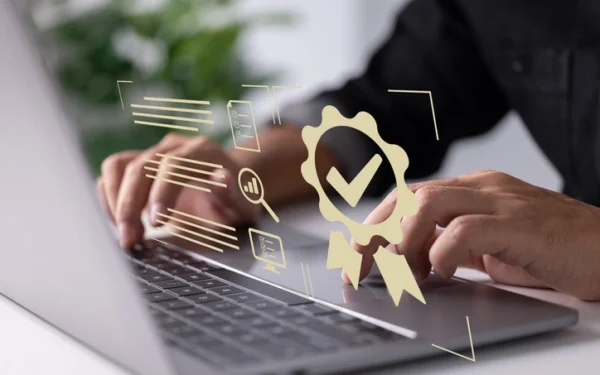About the Author: Richard Halton
Introduction
The landscape of laboratory management and scientific research continuously evolves, with lab software at the forefront of innovation. In 2024, laboratories seek solutions that not only streamline operations but also enhance data integrity and facilitate collaboration among scientists.
Criteria for Choosing the Best Lab Software
Choosing the right lab software requires considering several key factors, including functionality, user interface, integration capabilities, scalability, compliance standards, and customer support.
Leading Lab Software Solutions in 2024
Sapio Sciences is highlighted for its comprehensive solutions that cater to a variety of lab needs. The company offers a unified LIMS, ELN, and data management platform that supports the configurability and scalability required by modern digital labs. Their solutions are designed to manage workflows, data, and collaboration efficiently, supporting various scientific activities from PCR and genomics to medicinal chemistry and bioanalysis.
Specialized Lab Software Solutions
For specialized research fields, Sapio Sciences provides tailored solutions that enhance efficiency and insight, such as in vivo testing, clinical diagnostics, next-generation sequencing (NGS), histopathology, bioanalysis, and stability testing. These solutions are built to support the unique demands of various scientific disciplines, ensuring that labs can achieve their research objectives with greater precision and reliability.
Integration Trends in Lab Software
Integration capabilities are essential for modern lab software, allowing for seamless connections between various systems and instruments. Sapio Sciences emphasizes the importance of a science-aware™ platform that can integrate with over 200 instrument types and other software solutions, enhancing the workflow and data management within laboratories.
Future of Lab Software: Innovations on the Horizon
The future of lab software is geared towards breaking down silos between applications such as LIMS, ELN, Lab Execution Systems (LES), and Scientific Data Management Systems (SDMS). Sapio’s platform is an example of this future, offering a centralized system that prevents data silos and promotes a more integrated approach to lab management.
Choosing the Right Lab Software for Your Needs
When selecting lab software, it’s crucial to evaluate the software’s ability to meet the specific requirements of your lab. Considerations include the software’s adaptability to your workflows, its scalability to accommodate future growth, and its compliance with regulatory standards.
Choose a Seamlessly Integrated LIMS and ELN Platform
In 2024, laboratories require solutions that go beyond traditional management systems. A seamlessly integrated Laboratory Information Management System (LIMS) and Electronic Lab Notebook (ELN) platform is essential for modern research and development environments. Such integration enables labs to streamline workflows, automate processes, and ensure that data integrity is maintained from sample intake to results analysis. Sapio Sciences offers a unified LIMS and ELN platform, ensuring that all aspects of lab work, from experiment design to data analysis and reporting, are connected in one cohesive system. This integration facilitates easier access to data, improves communication among scientists, and accelerates discovery by minimizing manual data entry and errors.
Ensure Your Lab Software is Configurable, No/Low-Code
Adaptability and ease of use are critical for lab software to meet the evolving needs of research organizations. Configurable, no/low-code lab software platforms allow laboratories to tailor workflows and processes to their specific needs without extensive programming knowledge. Sapio Sciences’ solutions exemplify this approach, offering no-code workflow builders that enable rapid configuration, automation, and tracking of complex workflows across multiple instruments and processes. This flexibility supports the unique demands of various scientific disciplines, ensuring that labs can optimize their operations for efficiency, accuracy, and compliance with regulatory standards.
Ensure Your Platform Provides One Unified Experience
The complexity of modern scientific research necessitates a lab software platform that provides a unified experience for all users. A single, integrated platform supports the entirety of a lab’s operations, from sample management to data analysis and collaboration. Sapio Sciences’ research lab management software is designed to offer a configurable, scalable, and unified experience that meets the demands of any workflow, scale, or instrument. This approach not only enhances productivity and performance but also ensures that scientists can focus on their research without being hindered by disjointed systems or incompatible tools.
All Your Data in One Place, Available to Any User
Centralizing data in a single, accessible location is crucial for the efficiency and effectiveness of lab operations. Sapio Sciences’ platform achieves this by unifying all scientific, application, and instrument data, making it available to any user within the organization. This centralized data management approach facilitates real-time collaboration, advanced data analytics, and seamless integration with external databases and applications. By having all data in one place, labs can ensure data integrity, accelerate decision-making, and foster innovation.
Built-in Sample, Materials, and Inventory Management
Effective management of samples, materials, and inventory is fundamental to the success of laboratory operations. Sapio Sciences’ lab software includes built-in features for comprehensive samples, materials, and inventory management. These features streamline the tracking, storage, and utilization of laboratory resources, reducing errors and inefficiencies. With integrated management tools, labs can maintain real-time visibility into their inventories, ensuring that resources are used optimally and that research progresses smoothly without unnecessary delays.
Out-of-the-Box Templated Solutions for Your Application
To further enhance the efficiency and ease of implementation, Sapio Sciences provides out-of-the-box templated solutions tailored for specific research applications. These pre-built templates allow labs to quickly adopt and deploy the software for various specialized applications, from genomics and proteomics to medicinal chemistry and bioanalysis. By leveraging these templates, labs can hit the ground running without the need for costly custom programming, ensuring that they can start benefiting from the software’s capabilities right away. This approach not only saves time and resources but also enables labs to maintain a competitive edge in their respective fields.
Conclusion
The best lab software in 2024 offers a blend of functionality, integration, and innovation, with Sapio Sciences leading the way with its configurable, scalable, and science-aware™ solutions. As labs continue to evolve, the choice of software will play a crucial role in enabling scientific breakthroughs and operational excellence.
For those interested in exploring Sapio Sciences’ solutions further, their platform offers a range of features designed to meet the diverse needs of research laboratories, including workflow configurability, data management, and collaboration tools.
This overview underscores the significance of selecting lab software that not only meets the current needs of a lab but is also capable of adapting to future challenges and technological advancements.
Frequently Asked Questions
How does the integration between Sapio Sciences’ LIMS and ELN platforms and third-party software or databases work?
Sapio Sciences’ LIMS and ELN platforms are designed to be highly integrative, supporting seamless data flow between different systems. The integration typically involves API (Application Programming Interface) access, allowing the platforms to connect with various third-party databases and software, including genomic data repositories, chemical databases, and other laboratory instrumentation software. The precise integration mechanisms would depend on the third-party systems in question but generally involve secure data exchange protocols and custom configuration options to align with the lab’s workflow.
What are the specific security measures and compliance standards supported by Sapio Sciences’ lab software solutions?
Sapio Sciences prioritizes the security of its lab software solutions and adherence to regulatory compliance standards. While specific measures were not detailed in the provided content, lab software platforms like those offered by Sapio typically include data encryption, user authentication and authorization, audit trails, and regular security assessments to protect sensitive information. Compliance with standards such as GDPR, HIPAA, and 21 CFR Part 11 is achieved through features like electronic signatures, secure data storage, and comprehensive audit logs. Users should consult Sapio Sciences directly for an exhaustive list of supported standards and security protocols.
Can Sapio Sciences’ lab software be customized for highly specialized or niche research fields, and if so, how?
Sapio Sciences’ platform is built to be highly customizable to accommodate a wide range of research fields, including niche and emerging areas. Customization can be facilitated through no/low-code configurations, modular design allowing for adding specific functionalities, and the ability to develop custom workflows or modules. This flexibility ensures that researchers can tailor the software to meet the unique demands of their specific field of study. The process for custom development likely involves collaboration between the lab’s staff and Sapio Sciences’ technical team to define requirements, design the solution, and implement the customizations.
What is the process for migrating data from existing systems to Sapio Sciences’ platforms, and what support is available during this transition?
Transitioning to Sapio Sciences from another system involves a structured data migration process to ensure that all existing data is accurately and securely transferred to the new platform. This process typically includes planning and analysis to understand the scope of migration, preparation of the data for transfer, validation to ensure data integrity, and finally, the actual migration. Sapio Sciences likely offers support services to assist with this transition, including technical assistance, training for lab staff, and post-migration support to address any issues that arise. The level of support available can vary, so labs considering a migration should engage with Sapio Sciences directly to discuss their needs and the support options available.
Additional Resources
- National Institutes of Health (NIH) Office of Science Policy:
- Resource on Data Sharing and Management: This page offers insights into best practices for data management and sharing, which is crucial for labs looking to optimize their software solutions.
- NIH Data Sharing and Management
- Laboratory Informatics Institute:
- Introduction to Laboratory Informatics: An educational resource providing a broad overview of laboratory informatics, including the role of LIMS and ELN in modern research environments.
- Introduction to Laboratory Informatics
- Journal of Cheminformatics – SpringerOpen:
- Electronic Lab Notebooks: Can They Replace the Paper?: An insightful article discussing the transition from paper lab notebooks to ELNs, evaluating the benefits and challenges of digital solutions.
- Electronic Lab Notebooks: Can They Replace the Paper?
- Gartner Research:
- Market Guide for Laboratory Informatics: Although direct access to Gartner’s market guides might require a subscription, this page provides an overview of Gartner’s research into the laboratory informatics market, offering valuable insights for organizations evaluating lab software options.
- Gartner Market Guide for Laboratory Informatics





